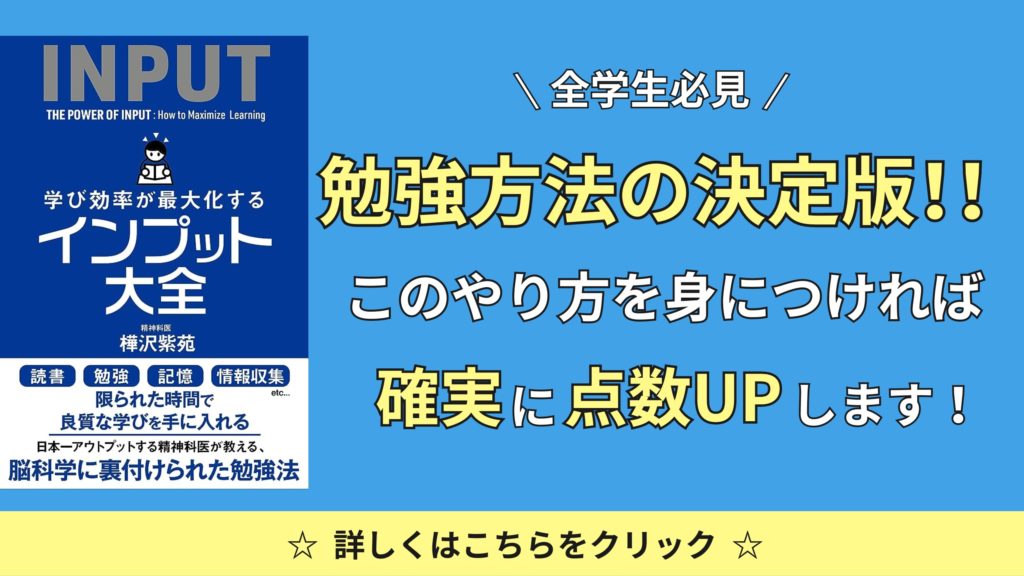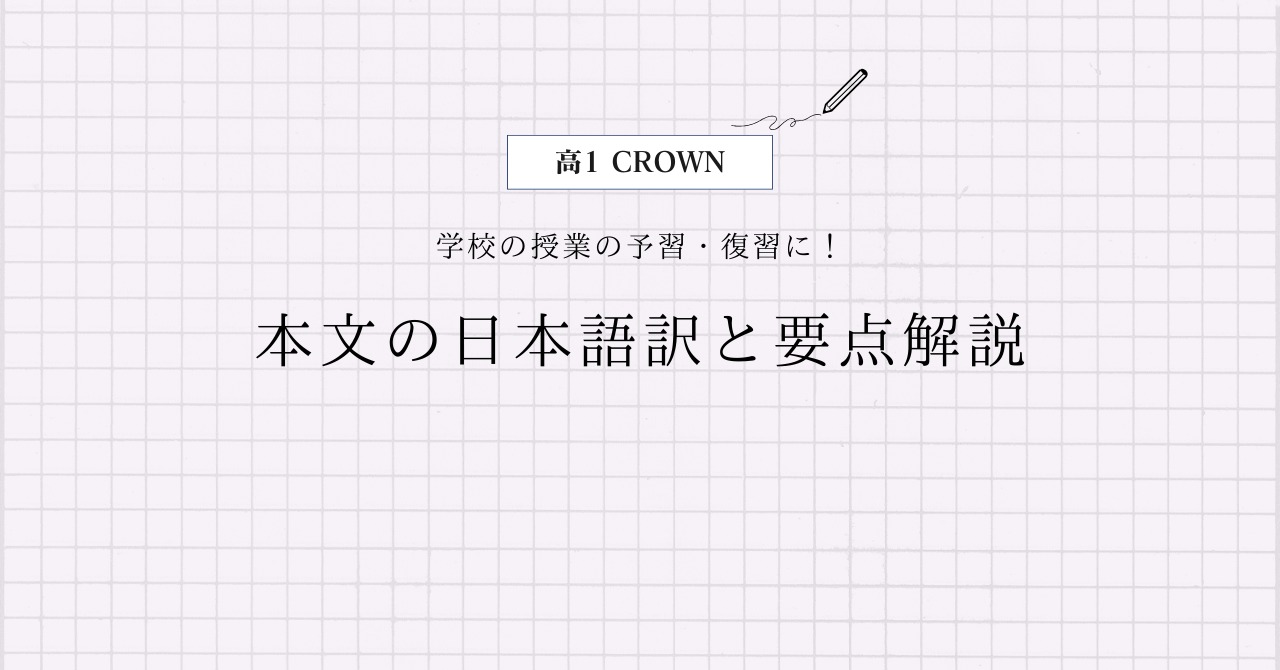三省堂 高1CROWN English Communication1 Lesson7 Section3の本文の日本語訳と重要箇所の解説です。
Section7-1, 7-2, 7-4の解説はこちらからご覧ください。
>高1CROWN English Communication1 Lesson7 Section1 本文和訳
>高1CROWN English Communication1 Lesson7 Section2 本文和訳
>高1CROWN English Communication1 Lesson7 Section4 本文和訳
- CROWN English Communication1 Lesson7 Section3 本文と日本語訳
- CROWN English Communication1 Lesson7 Section3 重要事項の解説
- Eskimos go whale hunting in April when the ice on the Bering Sea starts to break up.
- In 1983, I went whale hunting for the first time at Point Hope.
- The hunters wait on top of an iceberg for the whales.
- When the right moment arrives, they sail out on boats called “umiak.”
- They are not always successful in whale hunting.
- But if they are lucky, all the villagers come running to pull the whale onto the ice.
- I still remember seeing an old Eskimo lady come dancing and singing, to give thanks for the gift from the sea.
- Once the whale is placed on the ice, an elder of the village says a prayer.
- Then the young people start cutting it up, carefully following the elder’s instructions.
- The meat is shared by all the villagers, and in the end they push the huge head bone of the whale back into the sea, saying, “Come back again next year!”
- CROWN English Communication1 Lesson7 Section3 まとめ
CROWN English Communication1 Lesson7 Section3 本文と日本語訳
Eskimos go whale hunting in April when the ice on the Bering Sea starts to break up.
「ベーリング海の氷が解け始めると,エスキモーは4月に捕鯨しに行きます。」
In 1983, I went whale hunting for the first time at Point Hope.
「1983年,私はホープ岬で初めて捕鯨しに行きました。」
The hunters wait on top of an iceberg for the whales.
「猟師たちは氷山の頂上で鯨を待ちました。」
When the right moment arrives, they sail out on boats called “umiak.”
「絶好のタイミングが来ると,彼らは『ウミアク』と呼ばれるボートに乗って出港します。」
They are not always successful in whale hunting.
「彼らは必ずしも捕鯨に成功するわけではありません。」
But if they are lucky, all the villagers come running to pull the whale onto the ice.
「しかし運が良ければ,村人全員が鯨を氷の上に引き上げるために走って来ます。」
I still remember seeing an old Eskimo lady come dancing and singing, to give thanks for the gift from the sea.
「海からの贈り物に感謝するために,年配のエスキモーの女性が踊って,歌いながらやって来るのを見たことをいまだに覚えています。」
Once the whale is placed on the ice, an elder of the village says a prayer.
「一度鯨が氷の上に置かれると,村の長老が祈りの言葉を言います。」
Then the young people start cutting it up, carefully following the elder’s instructions.
「それから,若者たちが長老の指示に注意深く従いながら,クジラを切り刻み始めます。」
The meat is shared by all the villagers, and in the end they push the huge head bone of the whale back into the sea, saying, “Come back again next year!”
「鯨の肉は村人全員に分けられ,そして最後には『来年また戻ってきてください!』と言いながら,巨大な鯨の頭の骨を海に戻します。」

CROWN English Communication1 Lesson7 Section3 重要事項の解説
Eskimos go whale hunting in April when the ice on the Bering Sea starts to break up.
この文では「接続詞when」が使われていますね。
“Eskimo”は「エスキモー」,“whale hunting”は「捕鯨」,“ice”は「氷」,“the Bering Sea”は「ベーリング海」という名詞です。
“break up”は「壊れる,分解する,解ける」といった動詞で,“tobreak up“は「不定詞の名詞的用法」になっていますね。
In 1983, I went whale hunting for the first time at Point Hope.
“for the first time”は「初めて」という重要表現です。
“Point Hope”は「ホープ岬」ですね。
The hunters wait on top of an iceberg for the whales.
“hunter”は「猟師」,“top”は「頂上」,“iceberg”は「氷山」という名詞です。
“of”は前置詞で,”A of B”の形で「BのA」というように後ろから前に訳します。
“wait”は「待つ」という動詞で,“wait for~”で「を待つ」という表現になります。
When the right moment arrives, they sail out on boats called “umiak.”
この文では「接続詞when」が使われていますね。
“right”はここでは「適切な」といった形容詞で,“moment”は「瞬間,タイミング」という名詞,“arrive”は「到着する」という動詞になります。
“they”は“The hunters”を指していて,“sail out“は「出港する」という意味です。
“called”は「過去分詞」として,“called “umiak” “が直前の“boats”を修飾していますね。
They are not always successful in whale hunting.
“they”は“The hunters”を指しています。
“not always~”は「部分否定」で,「必ずしも~というわけではない」という意味になります。
“successful”は「成功した,上手くいった」という形容詞で,“be successful in~”で「~に成功する」という表現です。
But if they are lucky, all the villagers come running to pull the whale onto the ice.
この文では「接続詞if」が使われていますね。
“they”は“The hunters”を指していて,“lucky”は「幸運な」という形容詞です。
“all the 名詞”は,“all of the 名詞”の“of”が省略された形です。“all”の品詞としては「代名詞」にあたります。だから冠詞“the”の前にあるんですね。
ただ,訳すときはふつうに前から「すべての名詞」と訳してOKです。つまりは“all 名詞”という形と意味は同じになります。
“villager”は「村人」という名詞,“come -ing”は「~しながら来る」という意味です。
“pull A onto B”は「AをBの上に引き上げる」という意味で,ここでは「不定詞の副詞的用法」になっていますね。“onto”は「~の上に」という前置詞です。
I still remember seeing an old Eskimo lady come dancing and singing, to give thanks for the gift from the sea.
“still”は「まだ,いまだに」という副詞で,“remember”は「を覚えている」という動詞です。
“remember -ing”は後ろに「動名詞」を繋げると,「~したことを覚えている」という過去のニュアンスになります。
“see”は「知覚動詞」で,「知覚動詞 名詞 動詞の原形」という形は「名詞が…するのを~する」という意味になります。
今回は「年配のエスキモーの女性が踊って,歌いながら来るのを見る」ということですね。
“give thanks for~”は「~に感謝する」という表現で,“gift”は「贈り物」という名詞です。
また,“to give~”は「不定詞の副詞的用法」になっていますね。
Once the whale is placed on the ice, an elder of the village says a prayer.
“once”は「一度(いったん)~すると」という接続詞で,“place”は「を置く」という動詞です。
ここでは「受動態」が使われていますね。
“elder”は「年長者,長老」,“prayer”は「祈り,祈りの言葉」という名詞です。
Then the young people start cutting it up, carefully following the elder’s instructions.
“then”は「それから,そのとき,それでは」といった意味の副詞です。文に応じて柔軟に訳してあげてください。
“cut up~”は「~を切り刻む」という意味で,目的語が代名詞のときは”cut”と”up”の間に入れてあげます。代名詞でないときは,間でも後ろでもOKです。
また,“cuttung”は「動名詞」になっていますね。
“carefully”は「注意深く,慎重に」という副詞,“follow”は「に従う,ついていく」といった動詞,“instruction”は「指示」という名詞です。
“following”以下は「分詞構文」になっていて,ここでは「付帯状況」の「同時動作」で訳してあげます。
つまり「~しながら」という意味ということですね。
文の後半にカンマ+-ing形があるときは,「付帯状況」のことが多いので意識してみましょう。
The meat is shared by all the villagers, and in the end they push the huge head bone of the whale back into the sea, saying, “Come back again next year!”
“meat”は「肉」,“bone”は「骨」という名詞で,“share”は「を共有する,分ける」という動詞です。ここでは「受動態」になっていますね。
“in the end”は「最後には,結局は」という表現で,“they”は“the villagers”を指しています。
“push A back B”は「AをBに(押し)戻す」という意味で,“huge”は「巨大な」という形容詞になります。
“saying“以下は「分詞構文」になっていて,ここでも「付帯状況」の「同時動作」で訳してあげます。
“come back”は「戻る」という意味ですね。

CROWN English Communication1 Lesson7 Section3 まとめ
以上がCROWN English Communication1 Lesson7 Section3の日本語訳となります。
「分詞構文」「知覚動詞」などの使い方をしっかり確認しておきましょう!
>高1CROWN English Communication1 Lesson7 Section1 本文和訳
>高1CROWN English Communication1 Lesson7 Section2 本文和訳
>高1CROWN English Communication1 Lesson7 Section4 本文和訳
何か分からない点や他に解説してほしい点があれば,お気軽にコメントしてください!



コメント